How to Fix Hardwood Floor Gaps
The weather can wreak havoc on more than the exterior of your home. As the humidity rises and falls, it’s common for gaps to form and appear in hardwood floors. Expansion and contractions causes hardwood floor gaps. Hardwood takes on and loses moisture as the temperatures and the humidity rises and falls.
It may take years for gaps to show up in your hardwood floors. Whether your floors are newly installed or you’ve had hardwood floors for years, you can use humidifiers to reduce the likelihood of gaps. You can choose to use room humidifiers or furnace humidifiers; both will help minimize the chance of gaps showing up in your hardwood floors down the road.
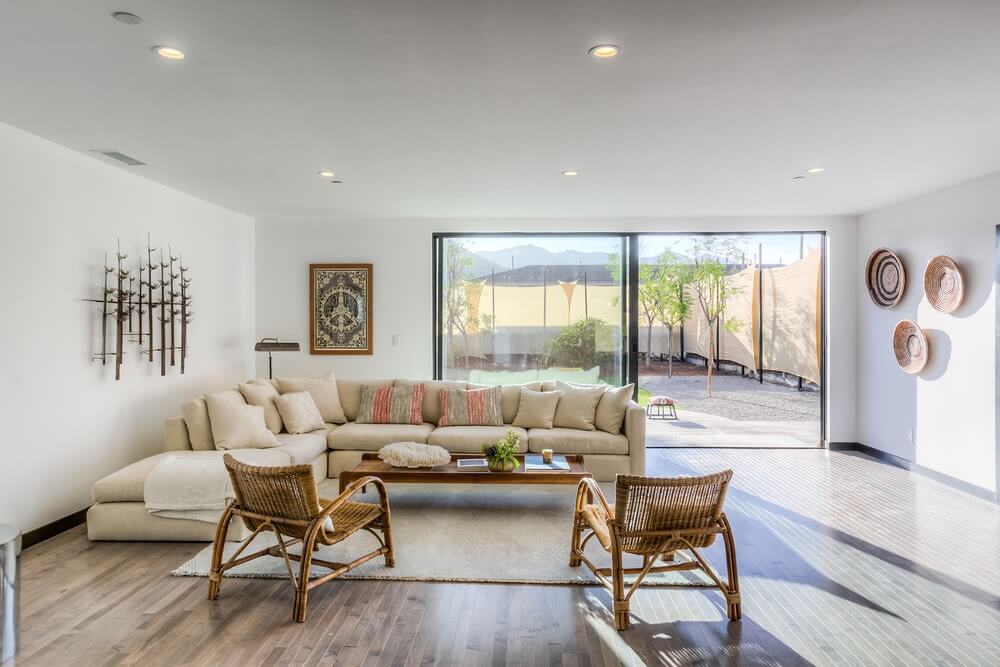
Don’t Delay Fixing Hardwood Floor Gaps
If you do discover that your hardwood floor is beginning to gap in spots, it’s important that you take care of it sooner rather than later. How you choose to fix floor gaps will depend on the size of the gap, how sound the floor is, and how many gaps are present. Too many gaps, extremely wide gaps, or a floor that has movement (creaking or loose boards) may require extensive repair. One thing to be aware of when determining the extent of a floor gap is to know whether or not the gap is considered normal. This means it may close when the weather changes. A gap that closes when the wood expands in high humidity might be considered normal by a professional. It’s always a good idea to check with a carpenter or professional wood worker to be sure.
Different Gap Repair Methods
You can fix floor gaps in a number of different ways. The most extensive is to have to completely replace a floor that has too many gaps to repair without losing its beauty. Ordinarily, you can “fill” the gaps with wood filler, putty, or with pieces of rope – and then finish with stain to match the floor. The latter is an older method of filling gaps, and not only serves as a way to fix floor gaps, but also will help keep any drafts that come up through the floor to a minimum as well.
Using fillers – such as putty, powdered filler, which is mixed to a putty or paste form, or even caulking – resolves gaps if done properly. It is best to use fillers with few narrow gaps. However, as humidity changes and the floor expands and contracts, the filler may actually be forced out.
3 Steps to Fix Hardwood Floor Gaps
- The first step is to clean out any debris that may in between the gaps.
- Apply filler liberally with either your fingers or a putty knife, allowing for some overfill.
- Once the filler has dried, you can sand and complete the filling process by stain where needed. Bear in mind, though, that you may need to do a second filling later on if the filler comes out of the floor or cracks due to improper filling.
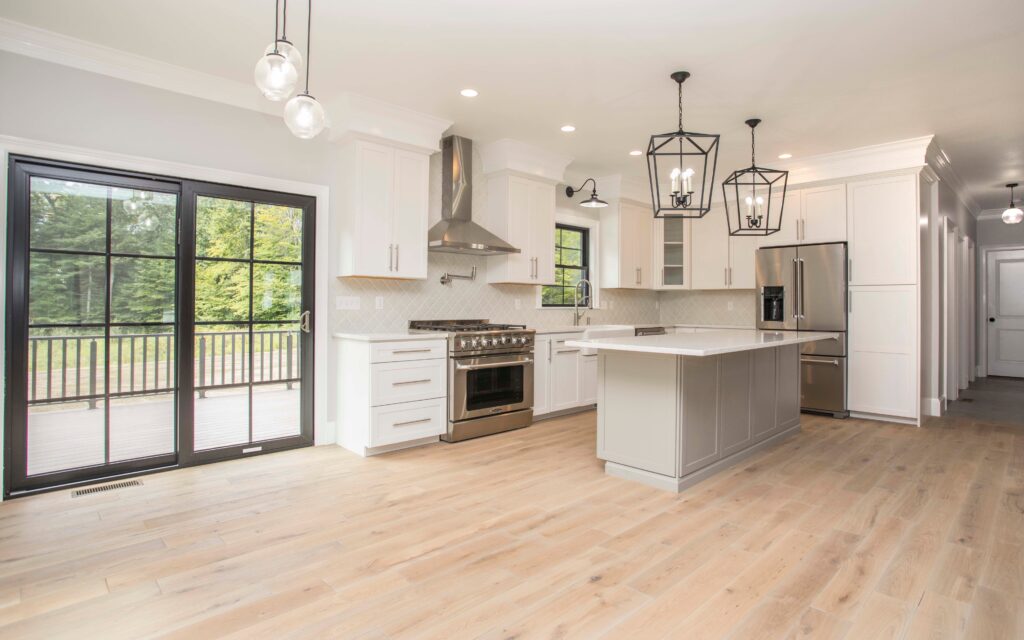
What About Wide Gaps?
For wide floor gaps it may be necessary to fix them with wood shims, narrow strips of wood or rope. Each of these processes are a little more time consuming but are a more permanent and are often more attractive looking than using a putty or paste. In any of these options, be sure the floorboards are secure before proceeding. Measure narrow strips of wood or rope to the length of the gap and using an adhesive. Then place the wood or rope in the gap. If using wood, weight it to dry.
Further, if you’re using wood strips or shims as the filler for fixing a floor gap, be sure to fill the floor gap when the weather is most humid, as this will be when the gap is the smallest and will lessen the likelihood of the wood pieces or shims from splitting or cracking when the wood expands. Once the wood or rope fillers have dried you can finish off with sanding, in the case of the wood strips, and stain to match the finish of the hardwood floor.
As with any repair job for a hardwood floor, it’s important to check with the manufacturer of your hardwood floor as well as the products you’re using to make sure you’re following directions properly. Floors with extensive gaps or in disrepair may benefit from being pulled and completely re-installed. Thiw will properly and permanently fix the floor gaps.
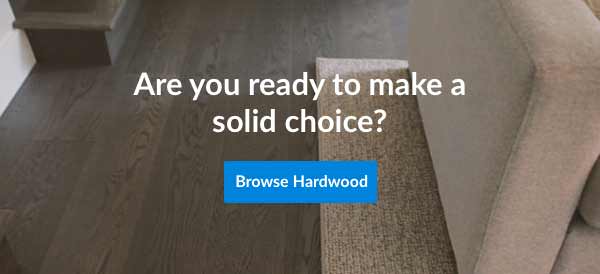

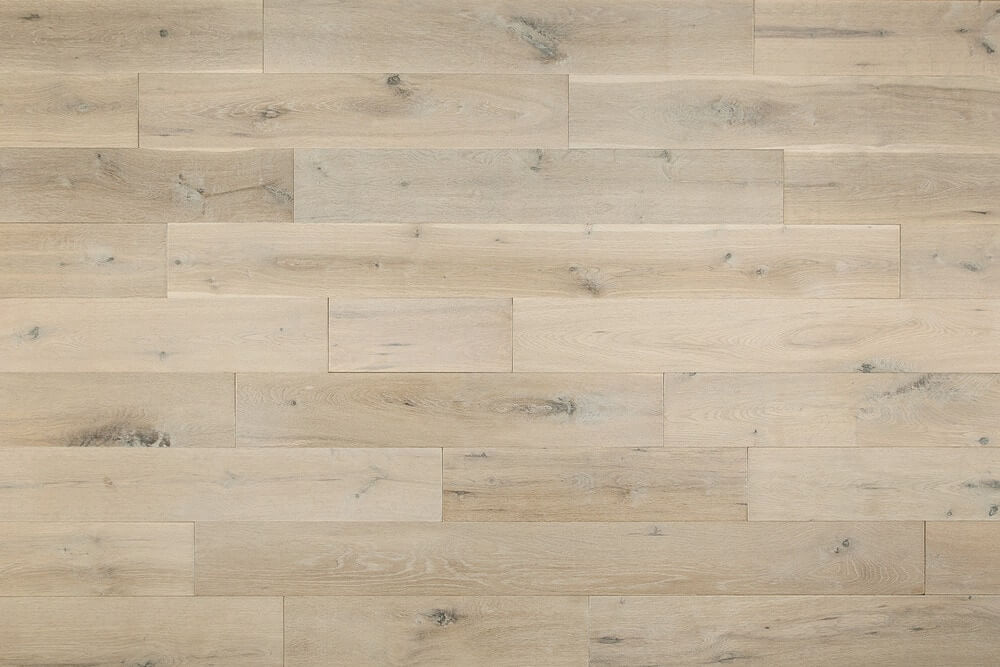

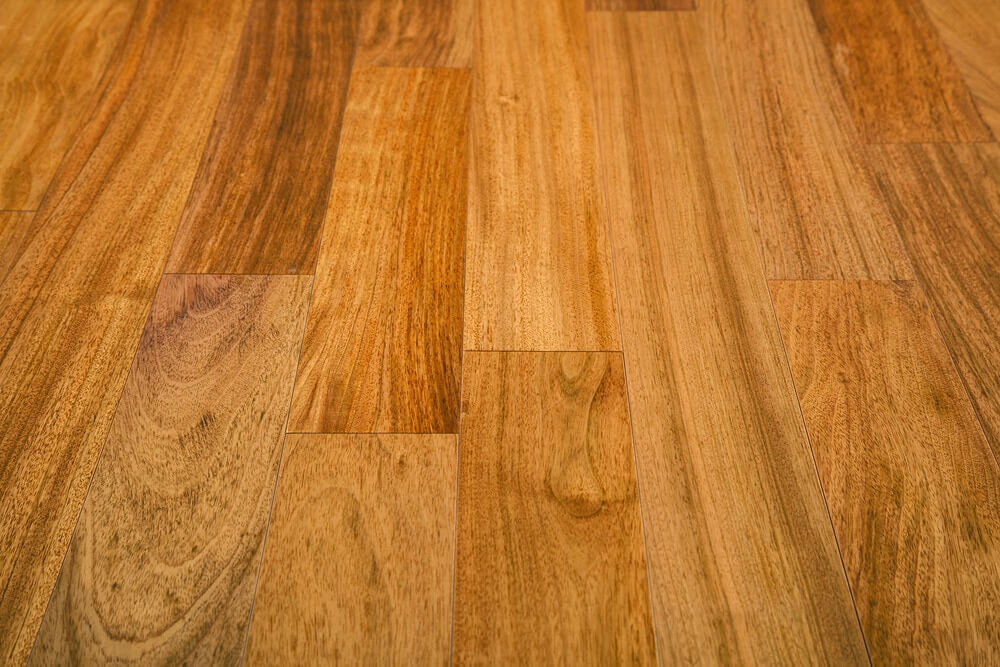
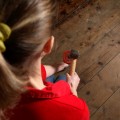

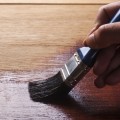
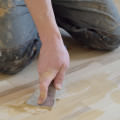
Michael Krause
I had many real major long cracks/seams in a floor (some over 3/8 inch wide) that I repaired many years ago in a 70 plus year old home. Some of the floors were hard woods (oak and maple) and some were soft wood fir. I asked many pros with no luck with a good cheap answer. I thought good and hard at the time and tried my own mixture (on a budget) and it worked out great Knowing floors shrink and stretch depending on weather conditions I knew anything hard would pop out in time or buckle the floor.What I did was made a mixture of latex paint of a brown color (to match or contrast the wood) and mortar. You read this correctly MORTAR, as in concrete. Guessing the mortar would thicken the paint and helps it dry hard, yet the latex paint stays flexible when it drys (in a day or two) I did not fill all the small cracks just the larger ones because the wood still needs to stretch and shrink. To-date (after 15 years) the floor is holding up great, nothing popped out and nothing buckled
Wendy
Can you remember what measurements of mortar to paint you used? I had a hand scraped wide plank oak floor installed by lumber liquidators, and they waited the amount of time for the planks to acclimatize, but still i have many wide gaps.
William Frost
I have a half inch gap between boards right where my closet door closes. I can slide one board but cant get the others to slide. Was hopeing to slide all down and fill along the back wall. I dont see and spatles or nails holding them together. House is about 15 years old.
BuildDirect Product Expert Team
Hi William,
Thank you for getting in touch! I would not suggest sliding all the planks across because you may not be able to get the boards back together again. You should be able to find a wood filler product at your local hardware store and this would be the best option to fill the gap. Please let us know if you have any other questions!
Van
Recently installed some BuildDirect engineered natural maple flooring in my motorhome that was left over from our house installation. When first installed, everything was glued down tight with absolutely no gaps and no moldings. The look was fantastic! However, as the flooring has acclimated to the very dry conditions that the coach is stored in (Phoenician dryness, and soon heat too), each piece has shrunk revealing very thin gaps between each floor board throughout the installation. The look now is similar to beveled edging because it occurs evenly throughout the installation. The flooring gaps are of 3 to 5 sheets-of-paper thickness all around each board. I have no doubt that if a humidifier were to be added to the coach, the gaps would close. However unlike a house, in this case that is not practical.
What would you suggest? Live with it, fix it or replace it with something else?
Is there a Polly filler that could be applied which would mask the darker lines this shrinkage has revealed? If such a filler were to be applied, is there a risk that it could be squeezed out if the coach were to be taken to a more humid climate? The mobile nature of the entire installation presents an interesting challenge!
BuildDirect Product Expert Team
Hi Van,
You are correct about the humidifier, that is the only way to fix the flooring. I definitely do not recommend using a poly filler in between the planks because they will expand again once the humidity does go up.
If you are okay with the gaps you can leave the flooring but there could be a tripping hazard and the floor will constantly expand and contract with the changes in humidity. I would suggest trying a floating vinyl plank because it doesn’t react to changes in humidity as much as real wood does. It is also a lot easier to clean. Please let us know if you have any other questions!
Cris Flores
Can you use this method for fixing gaps on laminate flooring as well?
BuildDirect Product Expert Team
Hi Cris,
Thank you for getting in touch! Unfortunately you cannot use the same methods to fix gapping in laminate floor as you can with hardwood. If you have gapping in your laminate floor it is important to try to get the humidity up in the areas to around 40-55%. I would also suggest checking if you have any areas that are larger than 750 square feet or have a run longer than 30 feet. If the floor is installed in an area too large without transition strips the floor will be too heavy to expand and contract and it can come apart. There are no quick fixes for gapping in laminate floors, but the best bet would be to check the two options above and get in touch with the manufacturer to ensure there are no known defects with the floor. Please let us know if you have any other questions!
Ron Allen
Is there a caulk that I can use to fill gaps between my t and g pine floors. Wood fillers crack under movement and hope the elasticity of caulking will hold up. Maybe a colored caulking would work or even clear. Any negatives when caulking wood flooring? Ron Allen, Carmel, Ca.
phyllis prater
Where are the answers to the questions from the six people above; Carla, Brian, Bogda, Jerry, and Korrey? Looked but no luck finding them.
korrey williams
Question: I believe, when installing wood laminate floors in a KITCHEN, you can apply some form of sealer(i.e. caulking or plaster) to where the floor meets the bottom trim of the wall. My question is, is it practiced in EVERY room in the house? Like for example, my whole living room and bedrooms have all had hardwood floors installed…should I apply the caulking or sealer to the gaps i have between the bottom wall molding and the laminate floor boards?
If so, what is the best idea for sealer?
jerry Santa
Question:
I was just wondering if there’s a type of caulk you can use for gaps.
Any suggetsions would be great!
Bogda
Brian,
I am planning to sand and refinish floor in my house. The house is 50 years old. I wonder if it’s advisable to patch gaps. If YES — how big gaps are recommended to patch?
Thank you,
Carla Kirby
I had a prefinished cherry floor put in through my whole cabin five years ago.
The day the installers left my hot water heater went. It overflowed and the floor there has gaps and cups.
Where chairs slide into the table the surface has worn off. Traffic areas are wearing. Some areas are getting holes where the wood seems to be softer than the surrounding wood. Help! It was a lot of money and I don’t know what to do.
Brian
I have a customer complaint regarding gaps in her existing wood flooring. We added on the living room and dining room, then sanded and refinished the entire 1100 sq. ft. My customer states the gaps in the existing wood floor were not filled so she is not excepting the results before the final coat. I have tried to explain to the customer that the existing floor is moving due to expansion and contraction, and if we fill these small gaps the floor will push the filler out or sink in. Please help me explain this to my customer a little better.
Thank you in advance.
Brian,
Brian
I have a customer complaint regarding gaps in her existing wood flooring. We added on the living room and dining room, then sanded and refinished the entire 1100 sq. ft. My customer states the gaps in the existing wood floor were not filled so she is not excepting the results before the final coat. I have tried to explain to the customer that the existing floor is moving due to expansion and contraction, and if we fill these small gaps the floor will push the filler out or sink in. Please help me explain this to my customer a little better. You may contact me on my mobile phone number if needed. 913-800-0856
Thank you in advance.
Brian,